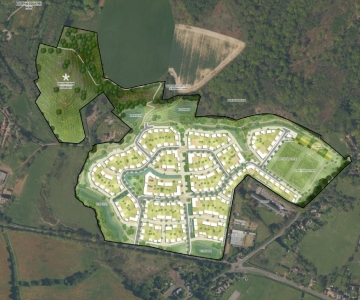The Planning Battle Lines
A day rarely goes by without headlines referencing our growing housing crisis, however it’s no surprise when the statistics are so stark. Our Associate Planning Director, Victoria Groves discusses the political nature of the delivery of new homes.
A day rarely goes by without headlines referencing our growing housing crisis, however it’s no surprise when the statistics are so stark.
There are 139,000 children classified as homeless, 1.2 million families stuck on housing waiting lists, 51% of 20 to 24 years olds still living at home and the estimated cost to Local Authorities of temporary accommodation reaching £2billion in 2024 according to Shelter.
This is a problem which touches every section of society so it is inevitable the planning system and the delivery of new homes will a key battle ground in the forthcoming General Election.
So what are the two main party’s plan of action and most importantly – will it work?
Boosting Housebuilding
Despite the perceived watering down of local housing targets in the revised National Planning Policy Framework (NPPF), both parties publicly support an annual target of 300,000 homes per year.

The Conservatives are focusing on urban towns and cities to do more to meet their housing requirements and extensions to permitted development rights have been introduced to help convert underutilised retail and agricultural premises to housing.
Gove has also announced ambitious plans to deliver 150,000 homes in Cambridge.
Labour has ambitious targets to build 1.5 million homes over the next parliamentary period including 750,000 affordable homes.
This is to be achieved through the reintroduction of mandatory housing targets for each authority. Their strategy also includes the efficient use of urban land as well as the next generation of new towns.
Faster Plan Making For The Delivery of New Homes
Both parties remain committed to a Plan led system and aim to significantly increase the speed in which authorities make these Plans.
Both seek to take advantage of our digital age with emphasis on the need to digitalise the Local Plan system. Plans are to be simplified and quicker to prepare.
With 67% of Local Planning Authorities not having an up to date Plan clearly this is a problem which needs fixing.
Labour and Conservative seem to have the same ambitions but the devil is in the detail and neither party have published sufficient detail to know how the new systems will work.
Green Belt – A Political Topic
The matter of releasing Green Belt land to deliver homes remains a hot topic and up until recently neither party have openly supported a whole scale review of this 70 year old policy.

However, in the latest NPPF the Government has sought to reinforce the importance of maintaining Green Belt and has indicated that Council’s will not be obligated to review their Green Belt boundaries to meet their housing requirements. The question remains whether sufficient homes can be delivered without building on Green Beltt land.
Whereas Labour has introduced the term ‘Grey Belt’ into the planning vocabulary which is to describe low quality Green Belt land such as disused car parks and dreary wasteland.
It is their intention to actively review Green Belt boundaries and identify areas of land which are low quality to deliver new homes.
Localism and The Political Parties
Both Labour and Conservatives place great importance on ensuring the system meets the needs and ambitions of the community.
Both reiterate the need to build high quality and attractive places for people to live and the importance of ensuring communities feel engaged in the process.
However perhaps where the difference lies is in the political messaging, where Conservatives are seeming to pitch to the established homeowning vote, Labour seeks to entice the disenfranchised Gen Z and millennial voters with the prospect of eventually having a home of their own.
What Is The Outcome For Housing Delivery?
Housing will feature heavily in election manifestos and both parties plan significant changes to the planning system.
The problem is extensive and will require drastic changes which will inevitably be controversial.
Whether either party’s proposals will prove the solution to our housing crisis is not something which will be evident immediately, however with the matter so high on the agenda we can at least expect action from the next Government.

If landowners would like to discuss their land and their future development aspirations, I would be pleased to assist.
Victoria Groves – Associate Planning Director 07702 532574 / victoriag@catesbyestates.co.uk




